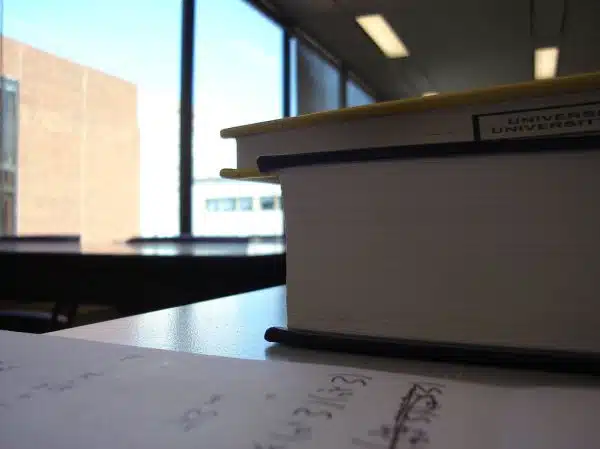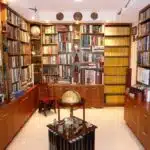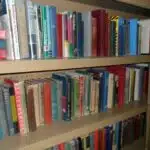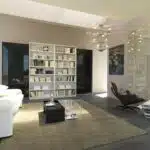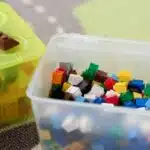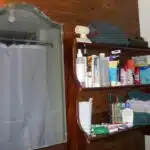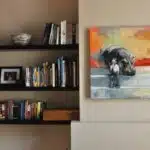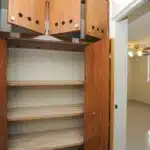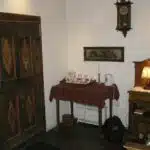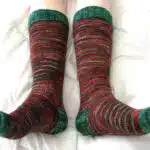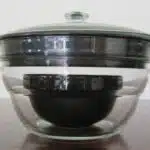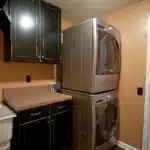Organizing books is not just about tidying up your shelves, it is a crucial task that impacts your daily life in more ways than you might realize. A well-organized bookshelf can have functional and aesthetic benefits that go beyond just looking pretty. However, the process of organizing books can be overwhelming and confusing for many people, especially those who are new to the concept of decluttering.
As a professional organizer, I understand the importance of creating a functional and aesthetically pleasing environment that serves your needs. In this article, I will guide you through the process of organizing your books in a way that enhances their functionality and beauty. With practical tips and expert guidance, you will learn how to transform your cluttered bookshelf into an organized space that not only makes it easier to find what you need but also adds value to your home decor.
Assessing Your Book Collection
Did you know that the average American household has around 300,000 items? That’s a staggering amount of stuff to keep organized, especially when it comes to books. To tackle this task, it’s important to establish assessing criteria for your book collection. A minimalist approach can help you determine which books are worth keeping and which ones should be donated or discarded.
When assessing your book collection, consider how often you read each book and whether it holds sentimental value. If you haven’t read a book in over a year or have no intention of reading it again, it may be time to part ways with it. Additionally, take note of any duplicates or outdated editions that can be replaced with newer versions.
A minimalist approach means keeping only what is necessary and brings value to your life. By adopting this mindset, you’ll free up space on your shelves for the books you truly love and enjoy reading. In the next section, we’ll explore how to create categories and labels so that organizing your remaining books will become an easy and enjoyable process.
Creating Categories And Labels
Labeling techniques are essential when organizing books. With proper labeling, you can quickly locate books and put them back in their rightful place. One effective method is to use color-coded labels to indicate the genre or subject of the book. For example, red for science fiction, blue for history, green for self-help, etc. You can also use numerical or alphabetical labels to organize the books based on author names or titles.
Digital book organization is becoming increasingly popular due to its convenience and ease of access. With digital book organization, you can store all your books on a single device such as a tablet or computer. One way to categorize digital books is by creating folders based on genre or subject matter. This ensures that all the books are in one place and easy to find.
Another way to categorize books is by sorting them by topic, author, or genre. Sorting books by topic involves grouping them into categories such as business, history, cooking, etc. Sorting by author involves arranging the books alphabetically based on the last name of the author while sorting by genre entails grouping them into categories like mystery, romance, thriller among others.
By using effective labeling techniques and digital book organization methods along with sorting by topic/author/genre you can create an organized library that makes it easy for you to find what you’re looking for quickly and efficiently.
Sorting Books By Genre, Author, Or Topic
Organizing books by genre allows for quick and easy retrieval of desired titles. Sorting books by author helps to identify titles from a favorite or familiar author. Books can also be sorted by topic to make it easier to locate titles related to a certain subject. When organizing books functionally and aesthetically, it is important to consider the layout and presentation of the materials.
Sorting By Genre
When it comes to organizing books, sorting them by genre is an excellent way to keep them in order. By grouping books that share similar themes or topics, you can easily locate a particular book or find new ones to read. Color coding and alphabetical order are two effective methods you can use when sorting your books by genre.
Color coding your books by genre is not only functional but also aesthetically pleasing. Assigning a specific color to each genre will make it easier for you to identify where a book belongs on your bookshelf. For instance, if you choose red for romance novels, all your books with this theme should have red labels or spine stickers. This visual cue makes it quick and straightforward for you or anyone else in the household to put a book back in its proper place.
Alphabetical order is another reliable method of organizing books by genre. Arrange your books alphabetically within each group, so titles are easy to find when looking for a specific book or author. This method works well whether you prefer physical or digital copies of books. It’s also easy to add new titles into the system as they come into your collection without disrupting the existing arrangement. With these two methods combined, sorting your books by genre has never been more accessible!
Sorting By Author
In addition to sorting books by genre, organizing chronologically and alphabetical by title are two additional methods that can be used to keep your collection tidy. One way of organizing books is by author, which groups books together based on who wrote them. This method is particularly useful for those who have a large number of books within a particular author’s body of work. It helps keep the books in order and makes it easier to locate a specific book or series.
When sorting books by author, an effective way to do so is alphabetically by last name. This approach ensures consistency and ease of use when adding new titles to your collection. Within each author’s section, you can organize the titles chronologically by publication date or alphabetically by title. Both methods are useful depending on what you’re looking for in your collection.
Organizing your books by author is an excellent way to group similar themes and topics together while also keeping them in order. By doing so, you’ll make it easy for yourself or anyone else in the household to find a specific book quickly. Whether it’s alphabetical order, chronological order or both, sorting your books will help you maintain a well-organized library that is both functional and aesthetically pleasing.
Determining A Layout For Your Shelves
In the past, organizing books have been a matter of alphabetical order and traditional library methods. However, with the advent of modern technology, color coding is now a popular way to arrange books. This method involves grouping books by their spine color, creating an aesthetically pleasing display that also makes finding specific titles easier.
On the other hand, maintaining alphabetical order still holds value as it allows for easy retrieval and tracking of books. For individuals who need to access their books frequently or require them for work purposes, alphabetical order might be the more practical option. It is essential to consider the purpose and function of your book collection before deciding on how to organize them.
When determining a layout for your shelves, it is necessary to strike a balance between functionality and aesthetics. By combining both color coding and alphabetical order techniques, you can achieve a visually appealing display while still keeping track of your books’ whereabouts. Consider using shelving units and storage bins to maximize space while also ensuring that each book has its designated place. With proper organization, your book collection can become an asset in any room rather than just a cluttered mess taking up space.
Maximizing Your Space With Shelving Units And Storage Bins
Shelving units and storage bins are two essential items for organizing books functionally and aesthetically. The first step in maximizing your space with shelving units is to assess the room’s layout and determine where the shelves will be placed. DIY shelving ideas are an excellent option for those who want to save money while creating a unique look that reflects their personal style.
Repurposing old furniture is another way to maximize your space and create functional storage solutions. For example, an old ladder can be transformed into a bookshelf by adding wooden planks across the rungs. A vintage suitcase can also be used as a stylish storage bin for smaller books or magazines.
When it comes to storage bins, clear plastic containers are ideal because they allow you to see what’s inside without having to open them. Labeling each bin with the book category or author’s name will make finding specific books much easier. Additionally, using decorative baskets or boxes can add a touch of elegance to any room while keeping clutter at bay.
Incorporating both shelving units and storage bins into your book organization system will help you maximize your space while keeping everything organized and easily accessible. In the next section, we will discuss arranging books by size and color, which is another way to create an aesthetically pleasing display that is also functional.
Arranging Books By Size And Color
- When organizing books, the use of book shelves can help to arrange items in an efficient and aesthetically pleasing way.
- Color-coding books can help make it easier to quickly identify and find what you are looking for.
- Grouping books by size can also help save space, as well as make it easier to find specific titles.
- When arranging bookshelves, consider the size, shape, and color of the books when finding the best location for them.
- It is also important to consider how easy it is to access the books when placing them on the shelves.
- The goal of organizing books should be to create an orderly, aesthetically pleasing system that makes the task of locating books easier.
Book Shelves
When it comes to organizing books, one of the most important tools is the bookshelf. DIY bookshelves are a great option for those who want to customize their storage space and save money. When choosing a bookshelf, it is important to consider not only its size and shape but also its functionality. A bookshelf should be able to accommodate different sizes of books while keeping them organized and accessible.
In addition to physical books, many people also have a collection of e-books that need to be organized. While they don’t take up physical space, organizing e-books can still be a challenge. One solution is to create separate folders for different genres or authors. This way, you can easily find what you’re looking for without having to sift through hundreds of files.
When arranging books on a shelf, there are different methods you can use depending on your preferences. Organizing by size and color is a popular choice because it creates an aesthetically pleasing display while making it easy to locate specific titles. You can group similar-sized books together and arrange them in rainbow order or by shades of the same color. Whatever method you choose, the key is to keep your shelves clutter-free so that each book has its own designated spot.
Color-Coding
When it comes to organizing books, arranging them by size and color is a popular method among book lovers. Using color psychology, this method not only creates an aesthetically pleasing display but also makes it easier to locate specific titles. Color-coding your books is also a creative way to personalize your bookshelf and make it stand out.
There are different ways of color-coding your books, depending on your preference. One approach is to group similar-sized books together and arrange them in rainbow order or by shades of the same color. For instance, you can place all the red-colored books together, followed by orange, yellow, green, blue, indigo, and violet. Alternatively, you can use colors to differentiate between genres or authors. For example, you can assign one color for fiction novels and another for non-fiction books.
Color-coding your books can also help you keep track of what you’ve read and what you haven’t. You can assign different colors to indicate whether a book is unread (red), partially read (yellow), or finished (green). This simple system allows you to easily see which books need attention and which ones don’t. Overall, using color psychology when arranging your books is a fun way to organize your collection while creating an eye-catching display that reflects your personality.
Size Grouping
When it comes to organizing books, arranging them by size and color is a popular method among book lovers. While color-coding your books can create an aesthetically pleasing display, grouping them by size can also add a new dimension of visual interest. By organizing your books according to their size hierarchy, you can create creative book stack ideas that not only look good but also utilize the space on your shelves efficiently.
One approach to size grouping is to arrange your books from tallest to shortest or vice versa. This method creates a streamlined look that gives an illusion of order and balance. Another option is to group books of similar sizes together and stack them in alternating directions, creating a visually dynamic effect. Additionally, you can use different objects as bookends or decorative pieces to break up the monotony of size grouping.
Size grouping can also be used in conjunction with color-coding to create a unique organizational system for your collection. For example, you can group all your large-sized red books together and then move on to small-sized orange books, followed by medium-sized yellow ones, and so on until you’ve arranged all the colors according to their respective sizes. This system not only looks great but also makes it easier to locate specific titles in your collection. By incorporating both size and color into your bookshelf organization, you can create a personalized display that reflects your style while serving its primary function – making your books easily accessible.
Incorporating Decorative Items And Accessories
As we continue our exploration in organizing books, it is worth noting that incorporating decorative themes into your bookshelf can add a personal touch to your space. According to a recent survey, 84% of people who organize their bookshelves find it aesthetically pleasing to incorporate decorative items such as vases, picture frames, and small plants. However, it is important to strike a balance between functionality and aesthetics, ensuring that the decorative items do not overcrowd or hinder the accessibility of your books.
One way to achieve this balance is by opting for DIY bookshelf projects that allow you to customize your shelves according to your preferences. For instance, you could create floating shelves that hang from the ceiling or wall-mounted shelves that free up floor space. Additionally, incorporating different textures such as wood and metal can add depth and interest to your bookshelf without compromising on its functionality.
Aside from using decorative items, using bookends and risers for added support can help keep your books organized while creating an eye-catching display. Bookends come in various designs and materials such as stone or acrylic and can be used to group books by genre or author. Similarly, risers can be used to elevate certain books or create a layered effect on your shelf. By utilizing these accessories effectively along with other organizational techniques discussed earlier in this series, you can create a functional yet personalized bookshelf that adds value both aesthetically and practically.
Using Bookends And Risers For Added Support
Bookends and risers are essential tools for organizing your bookshelf functionally and aesthetically. Bookends come in various materials such as metal, wood, acrylic, and ceramic. These materials provide a sturdy support system for your books while also adding to the visual appeal of your shelves. When selecting bookends, it is important to consider the weight of your books and choose bookends that can handle their heft.
DIY riser ideas are another option for added support on your bookshelves. Using materials such as wooden blocks or even old hardcover books, you can create custom risers that elevate certain sections of your shelf. This not only adds support but also creates visual interest by breaking up the monotony of a straight line of books. When creating DIY risers, it is crucial to ensure they are stable enough to hold the weight of your books without tipping over.
Incorporating both bookends and risers into your bookshelf organization can make a significant difference in its overall appearance and functionality. By selecting the right materials for your bookends and ensuring stability with DIY risers, you’ll be able to maximize space on your shelves while keeping everything organized. In the next section, we will discuss considering the visibility of your books when organizing them on a shelf.
Considering The Visibility Of Your Books
When organizing your books, it’s not just about putting them away in a neat stack or arranging them by color. One important factor to consider is the visibility of your books. How you arrange your books can affect how often you use them and how easily you can find what you’re looking for. To make sure your books are both functionally and aesthetically organized, here are some things to keep in mind when considering the visibility of your books.
Arranging height: Use height to create visual interest on shelves. Arrange books by size so that taller ones are next to shorter ones, creating a pleasing variation for the eye. This also helps break up the monotony of rows of identical book spines.
Adding plants: Plants can add depth and texture to shelves while also breathing life into a room. Small potted plants or succulents can be placed in between stacks of books, adding pops of greenery and breaking up the long lines of book spines.
Using bookends: Bookends serve more than just a functional purpose; they can also add character and style to your bookshelves. Consider using unique or decorative bookends that complement your personal style or the theme of your room. They can also be used to separate different sections of books or hold up small groupings of books.
Now that you have considered the visibility aspect when organizing your shelf, it’s time to explore alternative ways to store your books vertically or horizontally without sacrificing function or aesthetics.
Storing Books In Alternative Ways (E.G., Vertically, Horizontally)
When it comes to storing books, there are two main ways: vertically and horizontally. Both have their pros and cons, so it ultimately depends on your personal preference and the space you have available.
Vertical book storage is great for those who have limited space. By standing books up on their ends, they take up less surface area than if they were lying flat. This also makes it easier to see titles and covers of each book without having to pull them out from a stack. However, this method can put stress on the spines of thicker or heavier books over time.
Horizontal book storage may take up more space, but it allows for more creative storage options. For example, stacking books in a pyramid shape or placing them in a woven basket can add visual interest to a room. Additionally, horizontal storage takes pressure off the spine of each book and allows for even weight distribution. However, it can be difficult to see titles and covers of each book when they are stacked on top of each other.
When it comes to storing your books, there are many creative options to choose from depending on your personal style and the space you have available. Consider trying out both vertical and horizontal methods to see what works best for you. In the next section, we will discuss how to maintain your bookshelf over time to ensure your books stay organized and protected.
Maintaining Your Bookshelf Over Time
Once you have organized your books, it is important to regularly maintain your bookshelf. This will ensure that everything stays in its proper place and that it continues to function optimally for you. One way to do this is by assessing the relevance of each item on your shelf. This means taking a critical look at each book and deciding whether or not it still serves a purpose in your life.
Assessing relevance can be done by asking yourself some key questions. Have you read this book recently? Will you likely refer back to it soon? Does it still align with your current interests and goals? If the answer is no, then it may be time to remove that book from your shelf. Regularly reassessing the relevance of each item on your shelf can help prevent clutter from accumulating over time.
Regular maintenance also involves taking care of the physical space itself. Dusting and wiping down shelves periodically can keep them looking clean and tidy. Additionally, avoiding overcrowding on shelves can help prevent damage to both books and shelves themselves. By taking these small steps regularly, you can ensure that your bookshelf remains both functional and aesthetically pleasing for years to come.
When assessing the relevance of books on your shelf, there may be some that no longer serve a purpose in your life but could still benefit others. In our next section, we will discuss how to donate or sell unwanted books in a way that benefits both yourself and others in need.
Donating Or Selling Unwanted Books
Maintaining a well-organized bookshelf is an ongoing process that requires consistent effort to stay clutter-free. However, sometimes it becomes necessary to part ways with books that no longer serve a purpose in our lives. According to a recent survey, more than 70% of American households have at least one book they would like to donate or sell.
Donating books not only helps declutter your home but also benefits others who may not have access to reading materials. Local libraries, schools, and community centers are always in need of donations. Consider donating books that are in good condition and relevant to the organization’s needs. You can also donate to national organizations such as Better World Books or Books for Africa.
Selling books can be a great way to earn some extra cash while also decluttering your shelves. Online marketplaces such as Amazon, eBay, and BookScouter make it easy to sell your used books. Before selling, research the current value of your book and price accordingly. Don’t forget about local used bookstores or garage sales as alternative options for selling unwanted books. Remember, one person’s trash is another person’s treasure!
Creating a cozy corner or reading nook can be the perfect way to showcase your favorite books and create a relaxing space for reading. Here are some tips on how to create an inviting space:
- Choose comfortable seating such as a cozy armchair or chaise lounge
- Add soft lighting with table lamps or string lights
- Incorporate decorative elements such as throw pillows or plants
By maintaining an organized bookshelf and donating or selling unwanted books, you’ll not only create more space in your home but also contribute to the growth of literacy in communities around you. And by creating a cozy corner or reading nook, you’ll have the perfect spot to curl up with a good book and escape into another world.
Creating A Reading Nook Or Cozy Corner
After organizing your books functionally and aesthetically, it’s time to create a space that will inspire you to read. There’s nothing like a cozy corner where you can relax with a good book after a long day. Creating ambiance is crucial when it comes to designing this space. Consider the lighting, color palette, and textures of the furniture in the room. Soft lighting from floor lamps or table lamps can provide an inviting atmosphere for reading. Using warm colors such as beige or muted tones of blue or green can also help create a calming environment.
Choosing furniture for your reading nook requires careful thought and planning. A comfortable chair with an ottoman or footrest is essential for long periods of reading. If you have enough space, consider adding a small side table to hold your drink or snacks while you read. A bookshelf near your cozy corner can be both functional and aesthetically pleasing, allowing easy access to your favorite reads while also adding visual interest to the space.
Creating a reading nook is not just about having a designated spot for reading; it’s about creating an experience that inspires relaxation and enjoyment of literature. By incorporating soft lighting, warm colors, and comfortable furniture into your design, you’ll have created the perfect space for getting lost in your next great read.
Transitioning into Displaying Collectibles or Memorabilia:
Once you’ve created your ideal reading nook, it’s time to add some personal touches that reflect your interests and style. One way to do this is by displaying collectibles or memorabilia that are meaningful to you. This next section will discuss how to tastefully incorporate these items into your home decor without overwhelming the existing design aesthetic.
Displaying Collectibles Or Memorabilia
Creating a space to display your collectibles or memorabilia can add a personal touch to any room in your home. For sports enthusiasts, displaying sports memorabilia is a great way to showcase their passion and create conversation starters with guests. A few tips for displaying sports memorabilia include grouping items by sport or team, using shadow boxes to protect fragile items, and incorporating lighting to highlight the display.
Another way to enhance your display is by incorporating plants into it. Plants add a natural element that can soften the look of hard surfaces such as shelves or tables. Choose plants that complement the colors in your collection and ensure they are appropriate for the amount of light in the room. Hanging plants or small potted ones placed on shelves can also be used to create depth and interest in your display.
Whether you have a small collection or many items to display, creating a functional and aesthetically pleasing arrangement is important. You want your collectibles or memorabilia to be organized in a way that showcases their uniqueness while still being visually appealing. By following these tips and being intentional with your design choices, you can create an impressive display that reflects your personal style and passions.
Transitioning seamlessly from displaying collectibles or memorabilia, we will now explore ways to personalize your bookshelf with photographs or artwork.
Personalizing Your Bookshelf With Photographs Or Artwork
Once you have organized your books functionally and aesthetically, it’s time to add a personal touch. One way to do this is by incorporating photographs or artwork into your bookshelf decor. Not only does this enhance the visual appeal of your bookshelf, but it also allows you to showcase your personality and interests.
One option is to display family photos or travel snapshots on your bookshelf. This adds a sentimental touch and reminds you of the people and places that matter most to you. Alternatively, you can hang artwork above or beside your bookshelf. This creates a cohesive look and adds dimension to your space. Consider choosing pieces that complement the color scheme of your room or reflect your personal style.
To take it one step further, you can even incorporate DIY bookends into your bookshelf design. These can be made from various materials, such as wood or metal, and personalized with paint or other embellishments. Additionally, adding plants to your bookshelf not only brings in some greenery but also helps purify the air in the room. Consider placing small succulents or potted herbs on each shelf for a pop of color and freshness.
- Nested bullet point list:
- Incorporating photographs:
- Family photos
- Travel snapshots
- Hanging artwork:
Complementing color scheme
Personal style
Nested bullet point list:
- DIY bookends:
- Wood or metal materials
- Personalized with paint or embellishments
- Adding plants:
- Small succulents
- Potted herbs
Incorporating personal touches into your bookshelf design not only makes it visually appealing but also reflects who you are as an individual. By displaying family photos, travel snapshots, hanging artwork, creating DIY bookends, and adding plants, you can create a unique and personalized look that showcases both style and personality. Remember, the key is to have fun and be creative!
Conclusion
Organizing a book collection can be both functional and aesthetically pleasing, providing an optimal reading experience. Assessing your collection, creating categories and labels, and sorting by genre or author are all important steps in the process. Determining a layout for your shelves, maximizing space with storage bins or shelving units, and donating or selling unwanted books can also contribute to a well-organized library.
To truly elevate your bookshelf, consider creating a cozy reading nook or displaying collectibles and memorabilia alongside your books. Personalizing with photographs or artwork can add a unique touch to your space. With these tips in mind, organizing your book collection can be both practical and visually appealing.
In sum, taking the time to organize your book collection enhances not only its functionality but also its aesthetic value. By assessing your collection, categorizing it through sorting by genre or author, determining an optimal layout for shelves, maximizing space with storage solutions and potentially incorporating cozy reading nooks or personalized displays to make the space feel more inviting – you can create a library that is both organized and enjoyable to spend time in.
Image Credits
- “books” by stebulus (featured)

